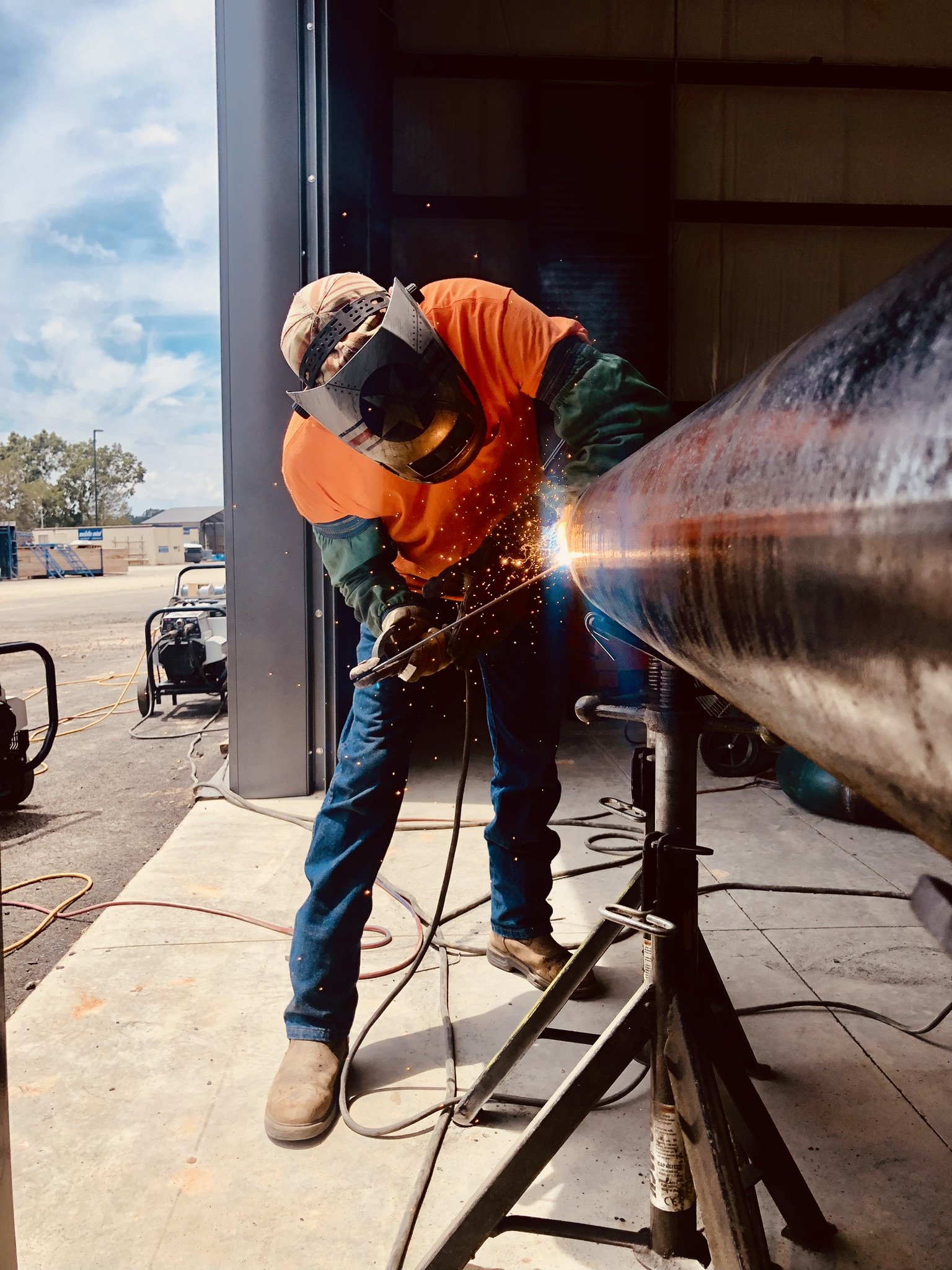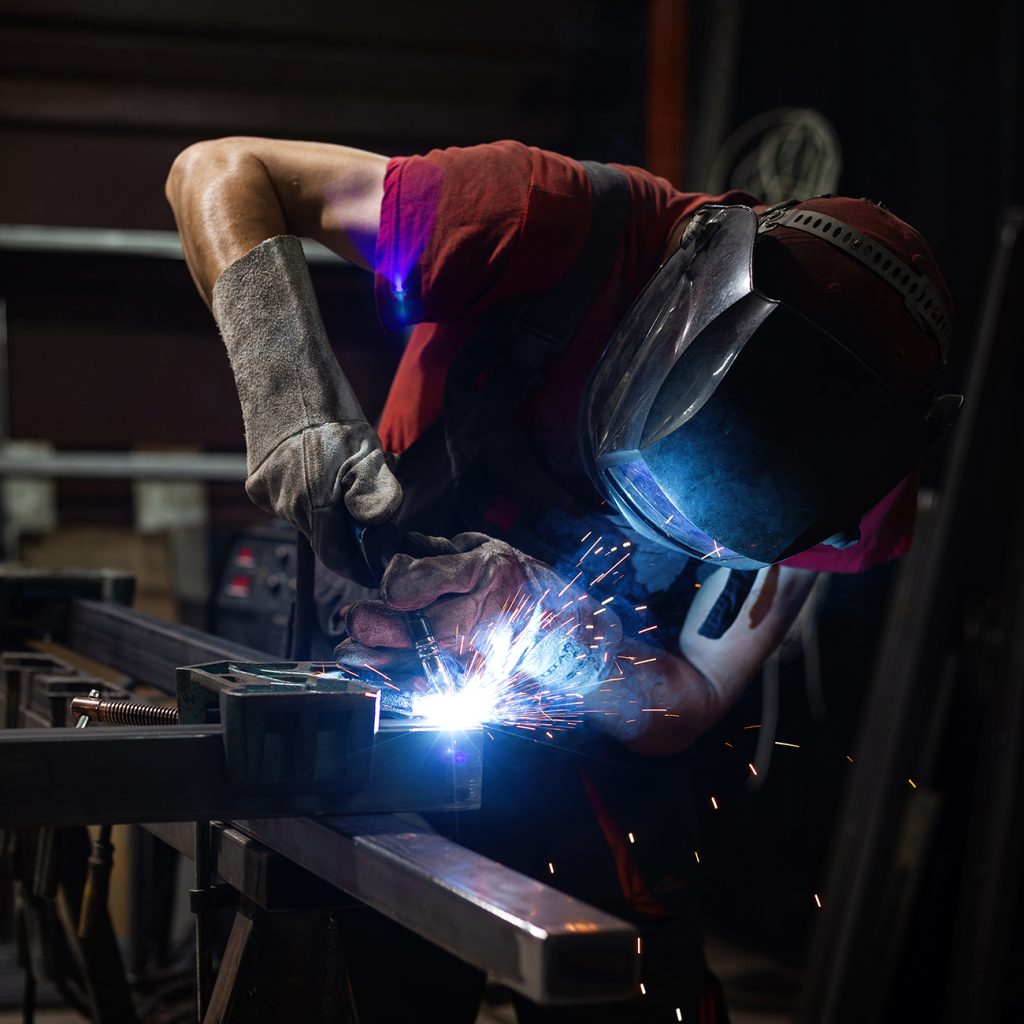Usual Welding Repair Service Issues and Just How to Address Them Effectively
Welding repair services commonly experience a series of issues that can endanger the integrity of the end product. Typical problems consist of poor infiltration, porosity, and misalignment, to name a few. Each issue offers one-of-a-kind challenges that need details approaches for resolution. Recognizing these problems is vital for welders aiming to boost their skills and results. This conversation will check out these typical welding repair issues and effective methods to resolve them.
Insufficient Infiltration
Inadequate infiltration occurs when the weld steel stops working to completely fuse with the base product, resulting in weak joints and possible structural failures. This issue commonly comes from insufficient warmth input, incorrect electrode angle, or improper welding speed. Welders might encounter poor penetration due to a miscalculation of the essential criteria for a certain product thickness or type. Additionally, contamination on the base material's surface area can prevent efficient bonding, intensifying the problem. To address poor penetration, welders ought to assure appropriate settings on their tools and keep a tidy job surface. Routine examination of welds is advised to identify any type of deficiencies early, permitting prompt improvements and the prevention of jeopardized architectural honesty in welded settings up.
Porosity
Porosity is an usual issue in welded joints that materializes as tiny gas bubbles entraped within the weld metal. This defect can jeopardize the honesty of the weld, leading to decreased toughness and potential failing under stress. Montana Mobile Welding and Repair. Porosity commonly occurs from contamination, dampness, or incorrect welding techniques, which enable gases to escape into the molten weld swimming pool. To resolve porosity, welders ought to guarantee correct surface area preparation, maintain a tidy workplace, and make use of ideal welding specifications. Additionally, choosing the right filler product and protecting gas can alleviate gas entrapment. Normal inspection and testing of welds can assist recognize porosity early, guaranteeing prompt rehabilitative activities are taken, consequently protecting the high quality and dependability of the bonded structure
Imbalance
Imbalance in welding can develop from various factors, including incorrect setup and thermal expansion. Comprehending the origin is important for reliable resolution. A number of modification strategies are offered to realign elements and ensure architectural honesty.
Causes of Imbalance
Welding misalignment frequently stems from a range of underlying concerns that can compromise structural stability. One primary cause is incorrect fit-up of parts before welding, which can cause gaps and unequal surfaces. Variations in thermal growth throughout the welding procedure can also cause distortion, especially if the products being signed up with have different coefficients of growth. Furthermore, insufficient clamping and fixturing might stop working to hold components securely in area, leading to activity throughout welding. Improperly kept equipment, including welding makers and devices, may present inconsistencies in the weld bead, further adding to misalignment. Operator error, stemming from insufficient training or experience, can additionally play a considerable function in developing misaligned welds.

Improvement Methods Offered
Dealing with imbalance successfully calls for a mix of rehabilitative strategies tailored to the certain problems at hand. One typical technique is the use of components or jigs to hold elements in the right setting throughout welding, making certain regular positioning. Additionally, preheating the products can assist reduce distortion and boost fit-up. For considerable imbalance, mechanical realignment methods, such as using hydraulic jacks or clamps, can be employed to deal with the placement prior to welding. Post-weld heat therapy might likewise be necessary to soothe stress and anxieties triggered by imbalance. Cautious evaluation and modification during the arrangement phase can avoid misalignment problems from ending up being significant problems, promoting a smoother welding procedure and improving total architectural honesty.
Distortion
Distortion is an usual obstacle in welding that can occur from numerous variables, including unequal home heating and cooling. Comprehending the reasons for distortion is crucial for applying reliable prevention methods. Resolving this problem not only enhances architectural stability however also enhances the general top quality of the weld.
Sources of Distortion
When subjected to the intense warmth of welding, products frequently undergo changes that can lead to distortion. This phenomenon mostly emerges from thermal development and contraction throughout the welding procedure. As the weld area warms up, the material broadens; upon cooling, it gets, which can develop interior tensions. On top of that, uneven heating throughout a workpiece can exacerbate these tensions, resulting in bending or bending. The kind of product likewise plays a considerable function; metals with varying thermal conductivity and coefficients of expansion might react in different ways, resulting in unforeseeable distortions. Inadequate joint layout and inadequate fixturing can contribute to misalignment during welding, increasing the likelihood of distortion. Recognizing these reasons is important for effective welding repair work and avoidance techniques.
Avoidance Techniques
Effective avoidance methods for distortion throughout welding concentrate on managing warm input and making certain correct joint design. Preserving a constant heat input aids to decrease thermal growth and tightening, which can result in distortion. Using strategies such as pre-heating the work surface can also decrease the temperature level slope, promoting consistent heating. Additionally, choosing appropriate joint styles, such as T-joints or lap joints, can improve stability and decrease tension concentrations. Implementing appropriate fixturing to safeguard the work surfaces in place even more help in maintaining alignment during the welding process. Lastly, staggered welding sequences can distribute heat more evenly, avoiding local distortion. By applying these approaches, welders can greatly decrease the chance of distortion and here boost the total high quality of their welds.
Cracking
Cracking is an usual problem experienced in welding repairs, often arising from different aspects such as incorrect cooling rates, product choice, or inadequate joint preparation. The occurrence of splits can considerably jeopardize the honesty of the weld, resulting in possible failings throughout operation. To resolve this concern, welders must first analyze the origin, ensuring that materials are compatible and appropriately picked for the details application. In addition, controlling the cooling price during the welding process is vital; rapid cooling can cause stress and anxiety and bring about breaking. Correct joint layout and preparation likewise add to lessening the risk. Executing these techniques can improve weld high quality and sturdiness, inevitably minimizing the possibility of splitting in finished weldments.

Incomplete Blend
A substantial issue in welding repair work is insufficient blend, which takes place when the weld steel does not appropriately bond with the base material or previous weld passes - Montana Mobile Welding and Repair Belgrade. This problem can bring about weak points in the joint, possibly endangering the integrity of the welded framework. Elements contributing to insufficient fusion include insufficient heat input, inappropriate welding technique, and contamination of the surface areas being joined. To address this issue successfully, welders should assure proper pre-weld cleansing and surface preparation, as well as change their welding parameters to accomplish ample penetration and combination. Routine examination throughout the welding process can also help identify insufficient blend early, permitting prompt rehabilitative steps to improve the total top quality of the weld
Overheating
While welding fixings can boost structural honesty, overheating offers a considerable difficulty that can cause product degradation. Excessive warm throughout welding can change the mechanical residential or commercial properties of steels, causing decreased strength, enhanced brittleness, and warping. This phenomenon is particularly critical in high-stress applications where architectural reliability is vital. Recognizing getting too hot can involve aesthetic assessments for discoloration or distortion, in addition to checking temperature throughout the welding process. To mitigate the dangers connected with overheating, welders must employ appropriate strategies, such as controlling heat input, adjusting travel speed, and using appropriate filler materials. Furthermore, carrying out pre- and post-weld warmth therapies can assist restore material residential properties and enhance the overall quality of the repair, guaranteeing lasting performance and security.
Often Asked Inquiries
What Are the Common Indicators of a Welding Issue?

Exactly How Can I Evaluate My Welds for Quality?
To examine welds for top quality, one can make use of aesthetic inspections, ultrasonic screening, and radiographic approaches. Each technique ensures structural integrity, identifies problems, and confirms adherence to defined requirements, eventually improving the dependability of the welded joints.
What Security Safety Measures Should I Take While Welding?
When welding, one must prioritize safety and security by wearing ideal personal safety tools, guaranteeing correct ventilation, protecting flammable products away, maintaining a tidy work space, and being conscious of surroundings to stop crashes and injuries.
Can I Fix a Weld Without Renovating the Entire Joint?
Repairing a weld without renovating the whole joint is feasible, depending upon the damage (Montana Mobile Welding and Repair Fabrication). Methods such as grinding, including filler product, or making use of a welding procedure can efficiently resolve specific defects while preserving the surrounding structure
What Devices Are Necessary for Reliable Welding Repairs?
Essential devices for reliable welding fixings consist of a welding device, cable brush, grinder, safety gear, clamps, and filler materials. Each device plays an important function in making sure quality and security during the repair work process. Porosity commonly arises from contamination, dampness, or inappropriate welding strategies, which permit gases to run away into the molten weld pool. Improperly conserved devices, including welding makers and devices, might present incongruities in the weld bead, further contributing to imbalance. When subjected to the extreme heat of welding, materials commonly go through changes that can lead to distortion. Cracking is a typical issue experienced in welding repairs, typically resulting from various elements such as improper cooling prices, material selection, or poor joint prep work. A considerable concern in welding fixings is incomplete blend, which occurs when the weld steel does not adequately bond with the base product or previous weld passes.